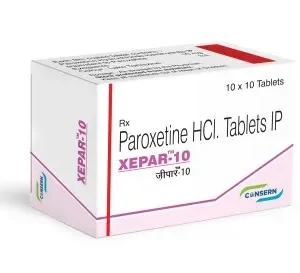Buy Mandrax 300 mg Injection Online
Mandrax, a sedative-hypnotic drug, has been infamous for its recreational abuse, particularly in parts of Africa and Asia. The active ingredient in Mandrax is methaqualone, a central nervous system depressant that was widely used in the 1960s and 1970s as a sedative and hypnotic. While the oral form of methaqualone (often known as Quaalude) was more common, the 300 mg injection form of Mandrax has also been used medically and recreationally. This comprehensive guide will delve into the other names for Mandrax, its dosage, common side effects, and overall benefits.
Mandrax, ein Beruhigungsmittel und Hypnotikum, ist vor allem in Teilen Afrikas und Asiens für seinen Freizeitmissbrauch berüchtigt. Der Wirkstoff in Mandrax ist Methaqualon, ein Beruhigungsmittel für das Zentralnervensystem, das in den 1960er und 1970er Jahren häufig als Beruhigungsmittel und Hypnotikum eingesetzt wurde. Während die orale Form von Methaqualon (oft als Quaalude bekannt) häufiger vorkam, wurde die 300-mg-Injektionsform von Mandrax auch medizinisch und in der Freizeit eingesetzt. Dieser umfassende Leitfaden befasst sich mit den anderen Namen für Mandrax, seiner Dosierung, häufigen Nebenwirkungen und den Gesamtvorteilen.
Other Names and Forms
Mandrax is known by various names and has been marketed under different brand names across the world:
- Quaalude: This is the most well-known brand name for methaqualone, particularly in the United States.
- Mandalay: Another brand name used in some regions.
- Sopor: A brand name used in European countries.
- Mexan: A name used in certain Asian markets.
- Discalm: Another brand under which methaqualone has been sold.
Mandrax is typically found in tablet form, but the 300 mg injection is designed for rapid onset of effects, making it suitable for situations requiring immediate sedation or anxiolysis.
Dosage Guidelines
The dosage of Mandrax, particularly the 300 mg injection form, must be carefully controlled due to its potent sedative effects and high potential for abuse. Medical supervision is crucial when administering this drug.
For Sedation and Hypnotic Use
- Initial Dose: The typical initial dose for sedation or hypnotic purposes is 150 to 300 mg, administered intramuscularly (IM) or intravenously (IV).
- Titration: Depending on the patient’s response and the desired level of sedation, the dose may be adjusted. However, care must be taken to avoid excessive dosing due to the risk of respiratory depression and other severe side effects.
- Maximum Dose: The maximum recommended dose should not exceed 600 mg within a 24-hour period to prevent overdose and severe complications.
Administration
- Intravenous (IV) Administration: Should be administered slowly to avoid severe respiratory depression and hypotension. The injection should take place over a period of 2 to 3 minutes.
- Intramuscular (IM) Administration: Should be injected deeply into a large muscle mass to ensure proper absorption.
Common Side Effects
Mandrax can cause a range of side effects, from mild to severe. Awareness of these effects is crucial for safe use.
Mild to Moderate Side Effects
- Drowsiness: One of the most common side effects, often desired in medical settings for its sedative properties.
- Dizziness: Patients may feel lightheaded, particularly when standing up quickly.
- Dry Mouth: Common but manageable with increased fluid intake.
- Headache: Mild to moderate headaches may occur, usually resolving over time.
- Nausea: Gastrointestinal discomfort is common, though it typically subsides with continued use.
- Blurred Vision: Temporary vision changes can occur but are not usually severe.
Severe Side Effects
- Respiratory Depression: High doses or rapid administration can lead to significant respiratory depression, which can be life-threatening.
- Dependence and Withdrawal: Mandrax has a high potential for dependence, and withdrawal symptoms can be severe, including anxiety, agitation, and seizures.
- Cognitive Impairment: Long-term use can lead to significant cognitive and memory impairments.
- Paradoxical Reactions: In rare cases, patients may experience increased anxiety, agitation, or aggressive behavior.
- Allergic Reactions: Severe allergic reactions, though rare, can include rash, itching, swelling, severe dizziness, and difficulty breathing.
Overall Benefits
Despite its potential for abuse and severe side effects, Mandrax 300 mg injection offers several significant benefits, particularly in controlled medical settings.
Benefits in Medical Settings
- Rapid Onset of Action: The injection form provides rapid sedation and anxiolysis, making it suitable for emergency situations or acute care settings.
- Effective Sedation: Highly effective in inducing sedation for procedures or in patients requiring immediate calming effects.
- Muscle Relaxation: The muscle-relaxant properties are beneficial in certain medical conditions requiring muscle relaxation.
Benefits in Controlled Use
- Management of Severe Insomnia: Mandrax can be effective in treating severe, refractory insomnia under strict medical supervision.
- Anxiety Relief: Provides significant anxiolytic effects, which can be beneficial in acute anxiety episodes.
Mechanism of Action
Mandrax, or methaqualone, works by enhancing the effects of gamma-aminobutyric acid (GABA), a neurotransmitter that inhibits brain activity. This action results in a calming effect on the central nervous system, leading to sedation, muscle relaxation, and anxiolysis. The rapid onset of action when administered via injection makes it particularly useful for immediate relief in acute care settings.
Comparisons with Other Sedative-Hypnotics
Mandrax vs. Diazepam (Valium)
- Onset of Action: Mandrax has a rapid onset of action, similar to diazepam, but its effects are often more intense.
- Duration: Diazepam has a longer half-life, providing more prolonged effects, whereas Mandrax’s effects are more short-lived but potent.
- Side Effect Profile: Mandrax has a higher risk of severe side effects and dependence compared to diazepam.
Mandrax vs. Barbiturates
- Safety Profile: Both Mandrax and barbiturates have high abuse potential and risk of overdose. However, Mandrax is generally considered to have a narrower therapeutic window.
- Efficacy: Both are effective for sedation and anxiolysis, but the choice depends on the specific clinical scenario and patient history.
Conclusion
Mandrax 300 mg injection (methaqualone) is a potent sedative-hypnotic drug with a high potential for abuse and severe side effects. However, in controlled medical settings, it offers significant benefits for rapid sedation, anxiety relief, and muscle relaxation. Its use requires careful dosage management and close monitoring to mitigate risks. While it has largely fallen out of favor due to its abuse potential and the availability of safer alternatives, Mandrax remains a part of medical history for its once-common use in managing severe insomnia, anxiety, and sedation needs.





Reviews
There are no reviews yet.